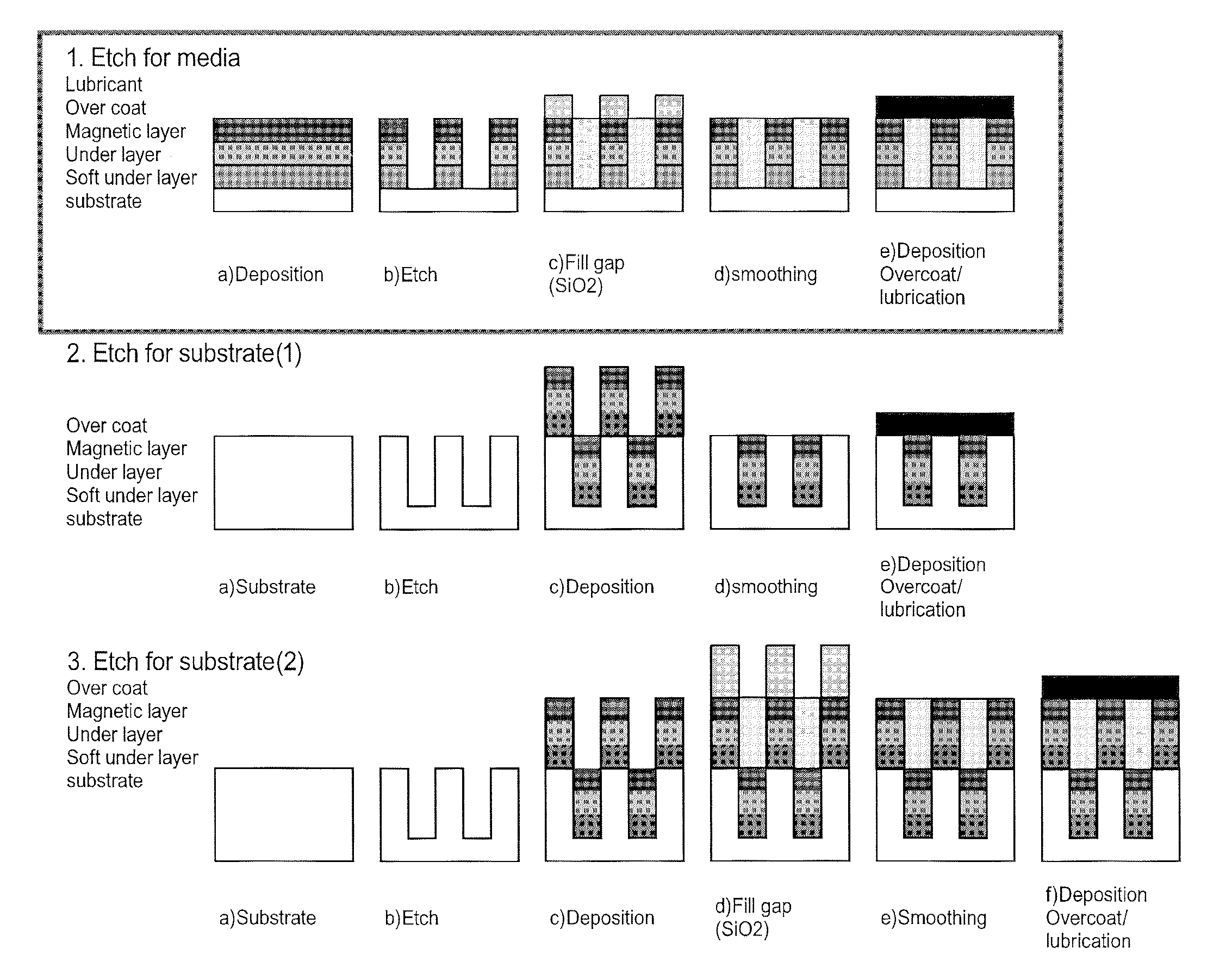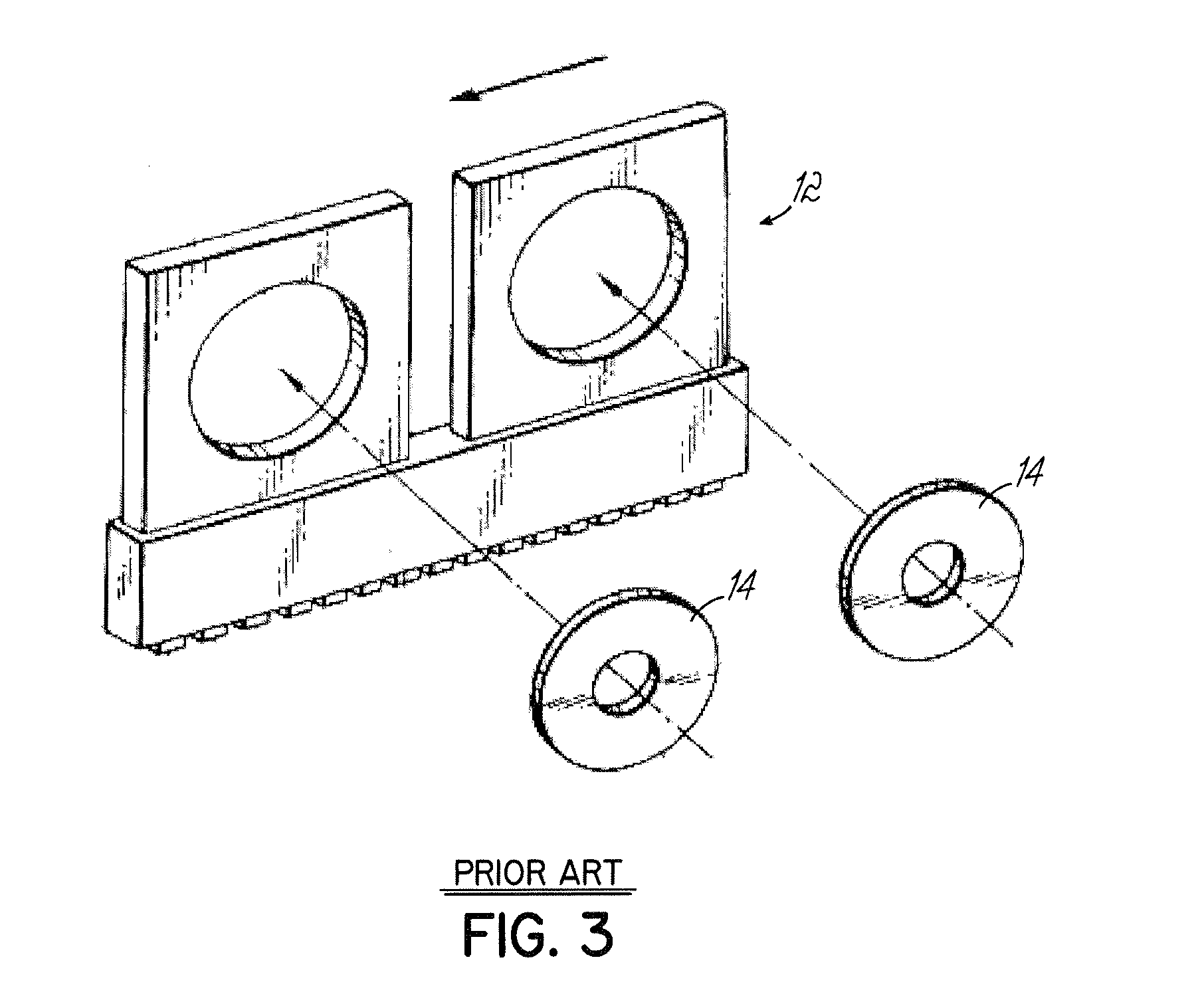System for Fabricating a Pattern on Magnetic Recording Media
a technology of magnetic recording media and pattern, which is applied in the field of magnetic recording media fabrication, can solve the problems of high cost per bit, high cost of solid-state memory, and physical limitations of memory density, and achieve the effects of extending the use between external services, reducing the system footprint, and improving processing efficiency
- Summary
- Abstract
- Description
- Claims
- Application Information
AI Technical Summary
Benefits of technology
Problems solved by technology
Method used
Image
Examples
first embodiment
[0143]In one embodiment of the present invention, substrates such as magnetic memory storage discs, are processed in a vertical orientation on both sides simultaneously, through the process steps of pattern transfer, gap fill, planarization, and overcoat deposition, at a high rate through a linear system that requires relatively small floor space. This processing sequence is represented graphically in the outlined approach labeled “1. Etch for Media” of FIG. 11. FIG. 11 also has two other approaches. For all three, the labels along the left of the figure correspond to the graphically drawn layers.
[0144]An embodiment of a linear processing system consistent with the “Etch for Media” process sequence , is represented in FIG. 12.
[0145]This embodiment has a linear configuration of eight process stations configured as Etch, Cool, Etch, Ash (as shown, it is within the second etch), Gap Fill, Planarization A, Planarization B, and Overcoat. Under each process station is one segment of a Tra...
first additional embodiment
[0169]In another embodiment, the process sequence described above is applicable to the approach represented graphically in the outlined approach labeled “1. Etch for Media” in FIG. 11. However, there are several alternative processing sequences in which the steps of etching, deposition and planarization are in a slightly different order, for example those if the lower areas of FIG. 11. Except for the number and sequence of processes, the operation of these embodiments proceeds in essentially the same way as the operation of the preferred embodiment, described above.
second additional embodiment
[0170]In another embodiment a hard mask may be used to pattern the storage layer since the imprint mask may not have sufficient etch resistance to survive during the storage layer etch. A hard mask strategy involving bi-layer hard masks is illustrated in FIGS. 15A-15I. The captions in those figures mention certain chemical elements and compounds that are used, but those, and any mentioned in this description are examples, and are not limiting. The disk is loaded with a lower hard mask and upper hard mask already under the imprinted photoresist. The top hard mask layer should be chosen such that it can be etched readily without eroding too much of the resist while remaining relatively intact during the etch of the bottom hard mask layer, while the bottom hard mask layer should have sufficient etch resistance to survive the storage layer etch. Among choices for the upper hard mask are Cr, NiFe that may be etched using Ar, or Ti or Ta that may be etched by using Ar / CF4 / O2 , or Al2O3 or...
PUM
| Property | Measurement | Unit |
|---|---|---|
| Angle | aaaaa | aaaaa |
| Processing properties | aaaaa | aaaaa |
| Order | aaaaa | aaaaa |
Abstract
Description
Claims
Application Information
 Login to View More
Login to View More - R&D
- Intellectual Property
- Life Sciences
- Materials
- Tech Scout
- Unparalleled Data Quality
- Higher Quality Content
- 60% Fewer Hallucinations
Browse by: Latest US Patents, China's latest patents, Technical Efficacy Thesaurus, Application Domain, Technology Topic, Popular Technical Reports.
© 2025 PatSnap. All rights reserved.Legal|Privacy policy|Modern Slavery Act Transparency Statement|Sitemap|About US| Contact US: help@patsnap.com



